Linux - Red Hat family in 2024
Lot's has changed since my last articles about Red Hat, CentOS, Rocky Linux and AlmaLinux. This is not your typical "Rocky vs. Alma" article. Instead, I want to give my take on how the "family tree" looks like today and how things are going.

Lot's has changed since my last articles about Red Hat, CentOS, Rocky Linux and AlmaLinux. This is not your typical "Rocky vs. Alma" article. Instead, I want to give my take on how the "family tree" looks like today and how things are going.
Red Hat
If we want to talk about Red Hat family, we have to talk about Red Hat (the company). First and foremost, Red Hat has wayyyy more products than Red Hat Enterprise Linux (RHEL). All of them are focusing on the enterprise market where reliability, support and perfectly fitted documentation is key.
Recently, Red Hat was acquired by IBM and soon changed their end-user-licensing, considered "against the idea of Open Source". Yet, there are some things, you might not see. Red Hat (and IBM, too) is a major contributor to Open Source projects. Looking at the contributor lists, you can find "@redhat.com" contributions in almost all Open Source projects, ranging from Kubernetes to Ansible and Linux Kernel to GNOME. Systemd wouldn't even be a thing without Red Hat.
In the past, they even acquired companies and made them open, afterward. Yes, Ansible Tower, CoreOS, Quay or Stackrox weren't Open Source beforehand.
From my perspective, they found their way to keep Open Source open and survive in a capital driven world, where intellectual property is considered the highest good.
History
No worries, this won't be a history lesson. The quick gist is:
- Once upon a time, there was Fedora, Red Hat Enterprise Linux (RHEL) and CentOS, in this order.
- Red Hat acquired CentOS
- Red Hat was bought by IBM
- Red Hat moved CentOS between Fedora and RHEL, now named CentOS Stream.
- AlmaLinux OS and Rocky Linux emerged as downstream of RHEL.
- Red Hat changed its end-user-license-agreement and therefor AlmaLinux OS moved to CentOS Stream as source.
- Rocky Linux, Oracle and SUSE founded the OpenELA.
I have linked some more details above, in case you want to dig deeper. You can also find some articles tackling this topic, linked at the end of the article.
State of Today
I think, you opened this article to get an idea how the situation looks today. Maybe you asked yourself which of the operating systems suites your need. Perhaps you wanted to understand the situation better and find your place for contributions. I hope the below help you to make a proper decision or gather some fresh knowledge.
The big picture
Before digging into the details, you might want to see the entire tree. At least to my understanding, it looks like the below.

Be aware, that there are way more connections than visible in this image. For example, Red Hat (the company) is still considered a major contributor to GNOME, Linux and many other tools, even created systemd. There is also a strong bonding between the CentOS, Red Hat and Alma community.
Yet, this is not the matter of this article. Let's stick to the Linux distributions they create and how software "trickles down".
Furthermore, I excluded many more exotic or specialized distributions like RockStor, EuroLinux, or ClearOS. All of them do valuable contributions and I may tackle them in a later article.
Fedora Linux
Fedora is the "leading edge". The developers, packages, and maintainers are working hand-in-hand with upstream projects to create the initial distribution of the Red Hat family. Yes, you can find some Red Hat employees in the contributor logs, work groups, SIG's and all over the project. Nevertheless, Fedora project is still a community project.

I have talked a lot about Fedora, and I am using it on my own workstation.
Qubes OS
Qubes OS is somewhat special, since it focuses entirely on privacy and security. It's also one of the rare Fedora derivates. The community is eagerly supporting and contributing for all kind of security related contributions. Therefore, the impact on some features is significant.
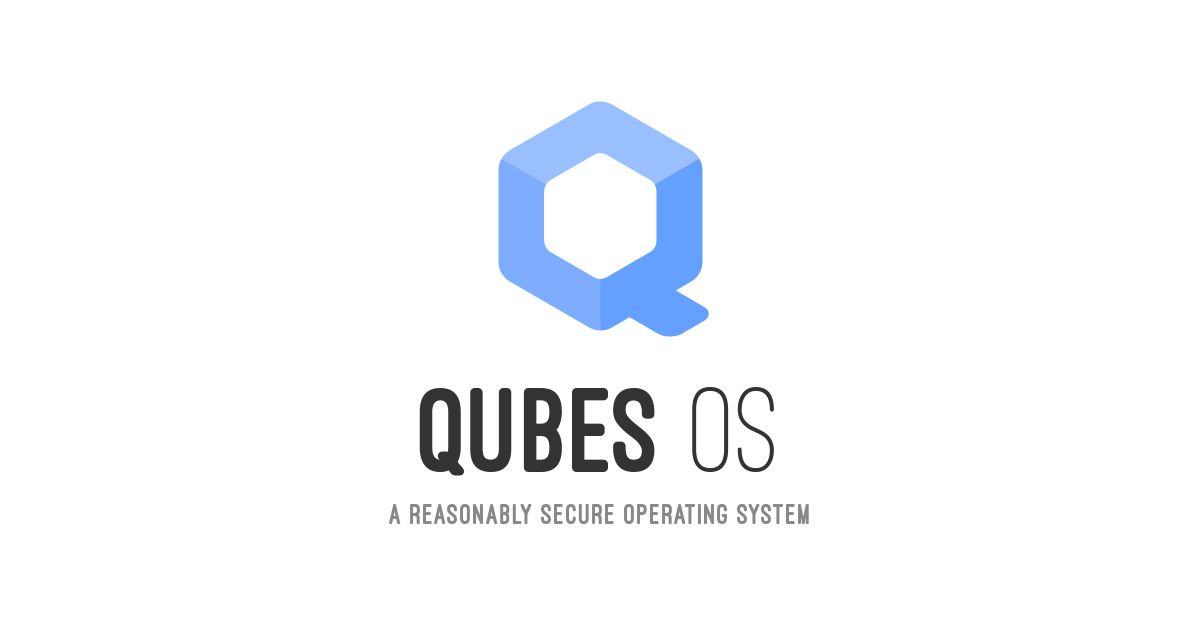
CentOS (Stream)
CentOS Stream is the first downstream distribution of Fedora. One might say, that the CentOS community takes a stable snapshot of Fedora and improves it even more. This includes additional testing, bug fixes and some cherry-picked features.
You can find many Red Hat employees working in the CentOS project. Therefore, it is considered to be the "RHEL development in the open". The idea is, that all code will be contributed to CentOS first. Yet, this doesn't work for all cases.

In the past, CentOS was just a downstream derivate of RHEL. This has changed, and I tackled these changes in some other articles, if you like to read more about this.
Red Hat Enterprise Linux
Red Hat Enterprise Linux (RHEL) is the downstream distribution of CentOS. In general, it will take the stabilized stream from CentOS and create proper releases from it.
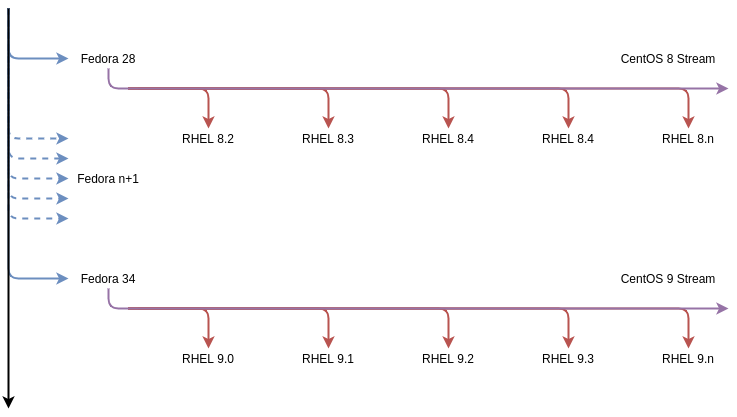
This is especially interesting for customers that will do maintenance on schedule. Since RHEL releases in minor release batches, you will find features slightly later than in CentOS stream.
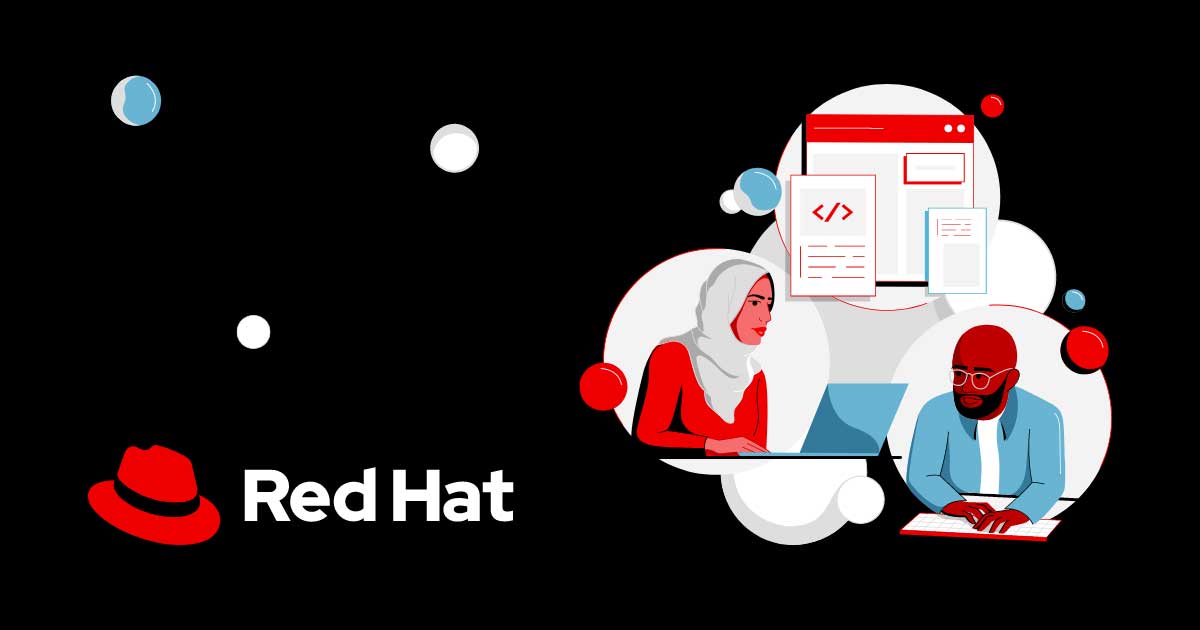
The support capabilities of Red Hat are top-notch, including certifications, trainings, EOL support and a vast ecosystem, including cloud offerings. On top, there is a developer program, which allows the use of 16 RHEL licenses to your liking. Yes, including production workloads.
AlmaLinux OS
Ok, and now the more complicated distribution. Initially, AlmaLinux OS started as a downstream of RHEL. This is no longer true. With the license changes of Red Hat, the project decided to base their own efforts on CentOS Stream, too. Therefore, we do have 2 distributions using CentOS Stream as their upstream now.

This also means, that AlmaLinux is no longer a 1:1 clone of RHEL, but a binary compatible distribution. This allows to make more jumps in the future. When it comes to contributions, AlmaLinux has a massive impact on the Red Hat family. With the Elevate project, the maintainers, developers, and contributors to AlmaLinux OS brought new tools to the family. They also improved their own tool chain by making use of openQA.
For me, AlmaLinux OS is the best choice if you are eager for a license free Red Hat enterprise derivate. The community is super nice, supportive, helps the entire family and the OS is rock solid. Also, the project really contributes to the family. It also a non-profit project with all the bells and whistles.
CloudLinux OS
CloudLinux OS is somewhat the father of AlmaLinux OS. When the whole change of CentOS happened, CloudLinux Inc. founded and sponsored AlmaLinux OS. Nowadays, CloudLinux OS is a direct derivate of AlmaLinux OS. Therefore, it can be considered Down-Down-Stream of CentOS Stream.

Said that, CloudLinux OS provides a pretty interesting long term support idea. CloudLinux created the TuxCare project which offers live patching, EOL support and much more. Yes, there is a price tag, but if you need these things, it might be worth it.
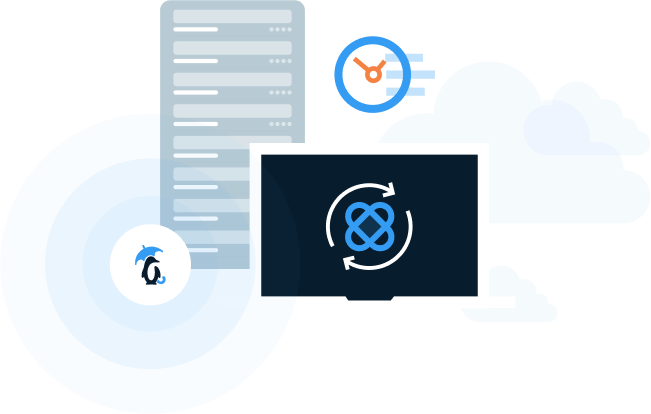
Open ELA
Before digging into Oracle and Rocky, we need to address the OpenELA. This association was created to foster a "freeloader welcome" community. Nowadays, it is more like a trade association of Oracle, CIQ (the company behind Rocky Linux) and SUSE (even though it is not a RHEL derivate).

Anyway, the association wants to make downstream sources for Enterprise Linux (meaning RHEL) available for public use. It was founded to address the recent EULA changes at Red Hat, which makes it (legally) impossible to use their source code, if you are not a customer.
Rocky Linux
Rocky Linux was founded right after the CentOS changes and the introduction of CentOS 8 EOL. Therefore, it is considered the second spiritual successor of CentOS. Said that, the whole project was funded by the idea of being non-profit. This has changed since the first announcement.
CIQ, the Rocky Linux Foundation and Rocky Linux itself are all supervised by the same CEO: Greg Kurtzer. Seeing how he rants by every occasion about RHEL and Red Hat, I still wonder why he eagerly wants to publish a Linux distribution that he hates.
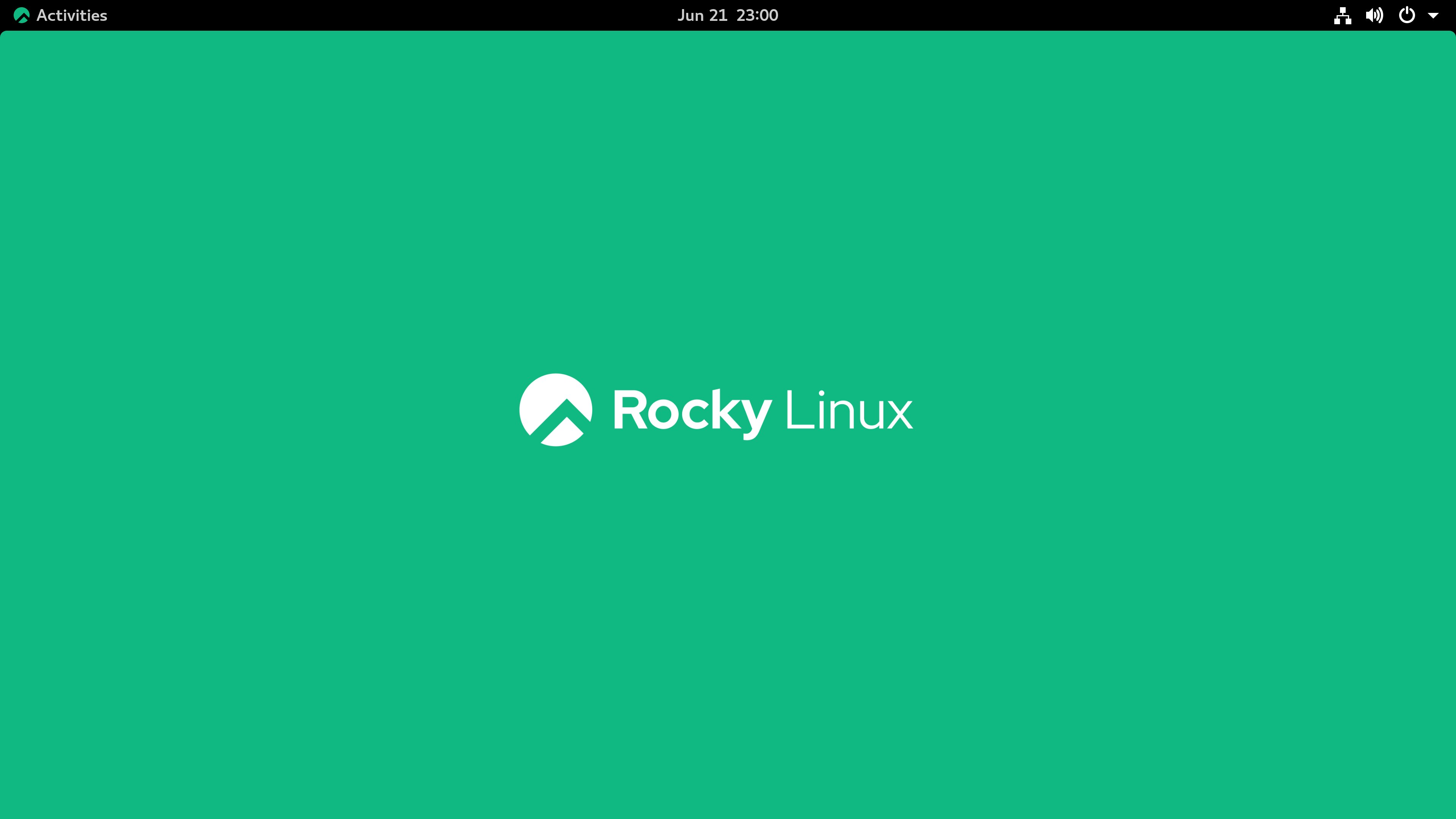
Anyway, Rocky Linux has also a huge community and is pretty supportive. I took a look the other day, if you want to check it out. The only reason I avoid Rocky is, that they are too close to Oracle.
Oracle Linux
Oracle is maybe the oldest RHEL derivates that is still alive. One might say, it is just another RHEL clone, but this is not entirely true. On top, Oracle provides additional patches, premium support and even a customized (unbreakable) Kernel, if you like these things.
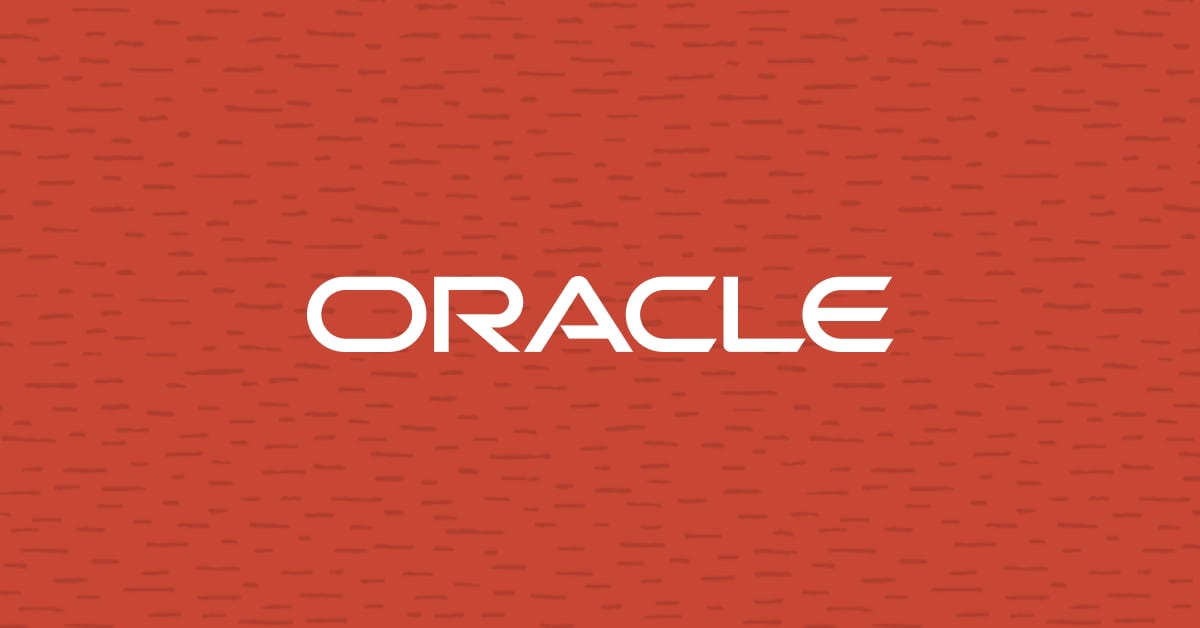
I used it a lot in some projects, and it feels pretty solid and has a nice knowledge base. Well, I just cannot get myself into using Oracle Linux on a daily basis.
Docs & Links
And here you go with the promised links.





Conclusion
Now, the Red Hat family has grown. Instead of a single downstream CentOS, we do have multiple pleasant options, each with their different attitude and niche. We also have some development options that directly impact how the downstream distributions work.
But, I am also interested in your opinion. How do you feel about the family today? Which distributions do you use? What helped you the most?














